American Meat Institute Foundation Releases Updated Edition of Recommended Animal Handling Guidelines & Audit Guide
The American Meat Institute Foundation (AMIF) on July 24 released an updated version of the AMI Foundation Recommended Animal Handling Guidelines & Audit Guide: A Systematic Approach to Animal Welfare, July 2013 Edition.
AMI’s Animal Welfare Committee collaborates regularly with guideline author Temple Grandin, PhD, professor of animal science at Colorado State University, to determine what changes and clarifications are needed based upon real-world use. The audit underwent a major overhaul in 2010 when a transportation audit was added. The audit was fine-tuned in the August 2012 edition and fine-tuned even further in the July 2013 edition.
In the latest edition, users will note a number of changes that are detailed on page four of the new document:
- A clarification has been added that farrowing on trucks should be counted just as calving and lambing are.
- A new category called “ambulatory disabled animals” has been added to Core Criteria Six of the Transportation audit to track animals that can still walk and are not severely injured, but appear lame and have some impairment of movement.
- Under Core Criteria 2 of the Sheep Transportation Audit, an omission of “compartments gated” was corrected.
The new edition has received an updated certification from the Professional Animal Auditor Certification Organization (PAACO). The guidelines were the first and remain the only association-authored animal welfare guidelines certified by PAACO.
“We are proud of our guidelines’ long history in encouraging continuous improvement in animal handling and welfare in meat-packing plants and of our continuing effort to make this a living, breathing document that is improved and refined based upon new knowledge and real-world experience,” says AMI Animal Welfare Committee chairman Rob Elder, PhD, director of HACCP, Food Safety and Regulatory Compliance at Seaboard Foods.
To access the new guidelines, visit www.AnimalHandling.org.

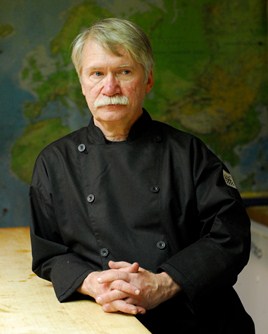 Simply preparing for your classes and delivering material is never sufficient. You have an obligation to yourself, your students and your institution to stay in touch with the industry you represent by building your personal, professional brand.
Simply preparing for your classes and delivering material is never sufficient. You have an obligation to yourself, your students and your institution to stay in touch with the industry you represent by building your personal, professional brand. At the 9th-annual CAFÉ Leadership Conference, four educators earned recognition and professional development for unleashing creativity in the culinary classroom.
At the 9th-annual CAFÉ Leadership Conference, four educators earned recognition and professional development for unleashing creativity in the culinary classroom.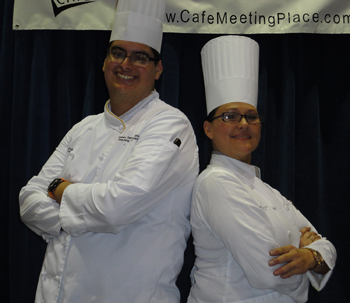 Two students’ winning dishes featuring Mexican avocado were enjoyed by attendees of CAFÉ’s 9th-annual Leadership Conference.
Two students’ winning dishes featuring Mexican avocado were enjoyed by attendees of CAFÉ’s 9th-annual Leadership Conference.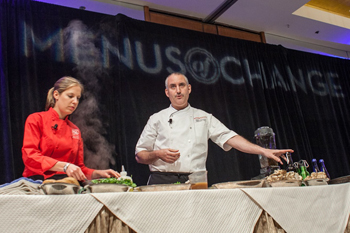 At the inaugural Menus of Change™ summit co-presented by the CIA in June, experts in foodservice, health science and social change presented information on topics relevant to what today’s health- and environmentally conscious consumers expect from corporations, foodservice operators and business leaders.
At the inaugural Menus of Change™ summit co-presented by the CIA in June, experts in foodservice, health science and social change presented information on topics relevant to what today’s health- and environmentally conscious consumers expect from corporations, foodservice operators and business leaders.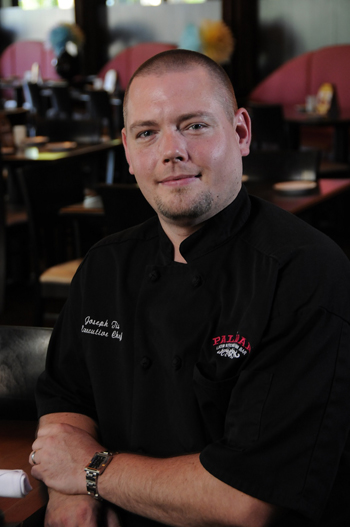 Paladar Latin Kitchen & Rum Bar honors the diversity of South and Central America and the Caribbean by representing several regions on the menu, overseen by executive chef Joseph Tis. Although applications and flavors are authentic, the menu must have broad appeal. After all, just what does Latin food really mean?
Paladar Latin Kitchen & Rum Bar honors the diversity of South and Central America and the Caribbean by representing several regions on the menu, overseen by executive chef Joseph Tis. Although applications and flavors are authentic, the menu must have broad appeal. After all, just what does Latin food really mean? Recognizing and respecting differences among people is characteristic of our industry, and a reality in most workplaces. In the classroom, honoring differences also creates a positive environment where everyone is welcome and feels safe and included.
Recognizing and respecting differences among people is characteristic of our industry, and a reality in most workplaces. In the classroom, honoring differences also creates a positive environment where everyone is welcome and feels safe and included.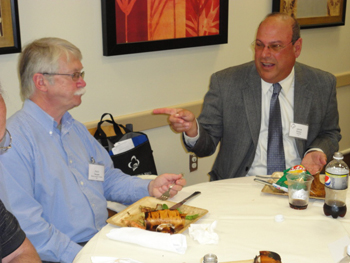 From opening and staring into a hot oven until the inside temperature plummets to reasons not to overcrowd a frying pan, Chef Weiner discusses how to successfully teach some hard-to-learn rules in the culinary classroom. For one common practice among students, however, he still seeks a solution.
From opening and staring into a hot oven until the inside temperature plummets to reasons not to overcrowd a frying pan, Chef Weiner discusses how to successfully teach some hard-to-learn rules in the culinary classroom. For one common practice among students, however, he still seeks a solution.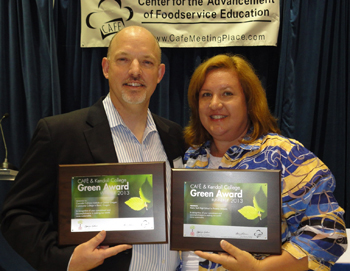 A collegiate culinary-arts program in central Oregon and a high school in Phoenix earn top honors for exemplary practices in—and innovative teaching of—ecological sustainability.
A collegiate culinary-arts program in central Oregon and a high school in Phoenix earn top honors for exemplary practices in—and innovative teaching of—ecological sustainability. Courtesy of the Idaho Potato Commission
Courtesy of the Idaho Potato Commission